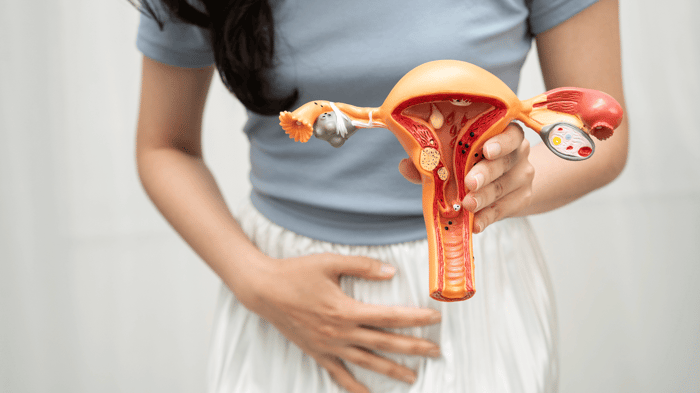Many women experience confusion when it comes to perimenopause vs menopause, often wondering when one stage ends and the other begins. Both stages mark significant hormonal shifts in a woman’s life, influencing not only reproductive health but also mood, sexual well-being, and overall physical health.
In this article, we’ll break down the differences, symptoms, and strategies for managing these changes naturally. By understanding what’s happening in your body, you can take proactive steps to maintain vaginal health, hormonal balance, and overall well-being during this transition.
What is Perimenopause?
Perimenopause, often referred to as the “transition phase” to menopause, typically begins in a woman’s 40s but can start as early as the mid-30s. During this phase, the ovaries gradually produce less estrogen and progesterone, causing fluctuating hormone levels that can trigger a variety of physical and emotional changes.
Common Signs of Perimenopause
-
Irregular periods: Cycles may become shorter or longer, heavier or lighter.
-
Mood swings: Anxiety, irritability, and occasional depression are common.
-
Sleep disturbances: Difficulty falling or staying asleep.
-
Vaginal dryness: Decreased lubrication and thinning of the vaginal mucosa.
-
Hot flashes and night sweats: Sudden warmth and sweating, sometimes disrupting daily life.
Recognizing perimenopause early allows women to implement preventive strategies, from lifestyle adjustments to non-hormonal support for vaginal health and comfort.
What is Menopause?
Menopause is defined as the point in which a woman has not had a menstrual period for 12 consecutive months, signaling the end of reproductive fertility. This stage usually occurs around age 51, but can vary.
Hormonal Changes During Menopause
-
Estrogen and progesterone decline: Leads to physical changes like vaginal dryness, thinning of the vaginal lining, and decreased bone density.
-
Reduced testosterone: May contribute to lower libido and energy levels.
Common Menopause Symptoms
-
Hot flashes and night sweats
-
Vaginal dryness and discomfort during intimacy
-
Changes in sexual desire
-
Sleep disturbances and mood changes
-
Increased risk of osteoporosis and cardiovascular issues
By understanding these symptoms, women can adopt proactive measures to protect vaginal health, maintain libido, and preserve overall wellness.
Key Differences Between Perimenopause and Menopause
|
Feature |
Perimenopause |
Menopause |
|
Hormone Levels |
Fluctuating |
Stable low |
|
Menstrual Cycle |
Irregular |
Absent |
|
Symptom Onset |
Gradual |
Established |
|
Vaginal Health Impact |
Mild to moderate dryness |
Persistent dryness |
|
Emotional Changes |
Mood swings, anxiety |
Mood stabilizes, but risk of depression persists |
These differences highlight the importance of tailoring lifestyle adjustments, supplements, and intimate care to your specific stage.
How These Changes Affect Your Body
Vaginal Health
Decreased estrogen leads to thinning of the vaginal mucosa, lower natural lubrication, and higher pH, making the tissue more susceptible to irritation, infection, and discomfort during intimacy.
Sexual Health
Vaginal dryness and reduced libido often occur together, affecting sexual satisfaction. Internal and external moisturizers, as well as hormone-free supplements like She Juicy™, can support hydration and tissue integrity.
Bone and Cardiovascular Health
Declining estrogen increases the risk of osteoporosis and cardiovascular disease. Regular exercise, calcium-rich foods, and lifestyle modifications are essential preventive strategies.
Sleep and Mental Health
Hot flashes, night sweats, and hormonal fluctuations can disrupt sleep patterns, contributing to mood swings, anxiety, and fatigue. Mindfulness, adequate rest, and stress management play a crucial role.
Lifestyle and Preventive Strategies
Hydration and Nutrition
Drinking plenty of water and consuming nutrient-rich foods—like omega-3 fatty acids, vitamins C and E, zinc, and amino acids—support tissue health, natural lubrication, and hormone regulation.
Exercise and Stress Management
Regular physical activity improves mood, bone density, and cardiovascular health. Stress-reducing practices, including yoga, meditation, and deep-breathing exercises, can mitigate hot flashes and improve sleep.
Hormone-Free Supplements
Natural supplements support vaginal health and hydration. Key ingredients to look for include:
-
Slippery Elm Bark: Soothes mucosal tissue and maintains moisture.
-
Amino Acids: Support tissue repair and overall vaginal integrity.
-
Minerals: Promote cellular function and natural lubrication.
Gentle Vaginal Care
Avoid harsh soaps, scented products, and douching. Wear breathable fabrics, such as cotton underwear, to reduce irritation and support mucosal health.
Emerging Tools and Treatments
Innovations for perimenopause and menopause support include:
-
Vaginal moisturizers and lubricants: Internal and external options for long-lasting hydration.
-
Probiotics: Promote healthy vaginal flora, reduce infection risk, and support natural lubrication.
-
Topical non-hormonal treatments: Creams and gels enriched with natural ingredients to soothe tissue.
Frequently Asked Questions (FAQs)
What is the difference between perimenopause and menopause?
Perimenopause is the transition phase marked by fluctuating hormones and irregular periods, while menopause is defined by 12 consecutive months without menstruation and a stable decline in estrogen.
At what age does perimenopause usually start?
Most women begin perimenopause in their 40s, though it can start in the mid-30s. Symptoms vary depending on genetics, health, and lifestyle factors.
Can perimenopause cause vaginal dryness?
Yes. Reduced estrogen during perimenopause can lead to decreased natural lubrication, thinning of the vaginal lining, and discomfort during sexual activity.
How long does perimenopause last before menopause?
Perimenopause typically lasts 4–10 years, but the duration varies widely among women.
Are lifestyle changes effective in managing menopause symptoms?
Absolutely. Hydration, nutrient-rich diets, exercise, stress reduction, gentle hygiene, and hormone-free supplements can help manage symptoms naturally.
When should I see a doctor about menopause-related symptoms?
Seek medical advice if symptoms are persistent, severe, or accompanied by unusual bleeding, pain, or recurrent infections. Early evaluation ensures proper care and long-term tissue health.
Start Taking Charge of Your Health
Understanding the differences between perimenopause and menopause empowers women to take proactive steps for vaginal health, sexual wellness, and overall well-being. By combining hydration, nutrition, gentle care, and non-hormonal support, you can navigate this life stage with confidence and comfort.
Take action today: monitor your symptoms, adopt preventive habits, and explore natural solutions to maintain health during the hormonal transition.
Explore our guide to hormone-free vaginal hydration and supplements designed to support perimenopause and menopause naturally.










